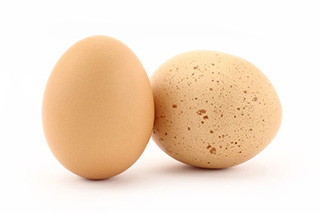The Fight Against Pigmentation
 Have you ever noticed that your skin tone appears uneven or that dark spots or patches (resembling large freckles or tea stains) have appeared on your skin ?
Have you ever noticed that your skin tone appears uneven or that dark spots or patches (resembling large freckles or tea stains) have appeared on your skin ?
Typically, these brown patches appear on the face, hands, décolletage and shoulder areas and can range from a light cafe au lait or tea stain colour to a darker brown.
If so, then the odds are that this is skin pigmentation or hyperpigmentation. It’s caused by a number of factors with sun exposure being the most common cause where UV rays penetrate deep into the skin causing pigmentation as well as ageing of the skin.
According to research, it is believed that hyperpigmentation can add, up to 12 years of a person’s perceived age on to the skin as line lines and wrinkles. But what causes pigmentation and can anything be done to restore your skin so it appears clearer and brighter ?
Understanding why pigmentation develops is key to treating it! So here’s the science bit …
When you go outside, even on a cloudy day, you are exposed to the sun’s UVA & UVB rays and it’s these UVA rays that stimulate your pigment cells (melanocytes) to manufacture a pigment called melanin.
Skin is composed of a variety of cells and organisms and the cell responsible for the production of melanin is called the melanocyte cell. We all need melanin in our skins to provide us with a level of protection against sunburn caused by the absorption of ultraviolet and visible light. Melanosomes form a protective cap over the cell nucleus and when the skin cells are stimulated by ultraviolet radiation, melanin is produced to absorb the sun’s rays – this results in a sun tan.
The main function of a tan is to protect the skin from further sun damage. However, even in dark skin the melanin only provides a small SPF of between 1.6 and 2.0. Due to the erosion of the ozone layer Dermatologists are now advising a minimal protection of SPF 30, so it is really essential that even dark skins protect with high SPF as they have very little natural protection.
Melanin is produced by an enzyme called tyrosinase. The melanin is transferred via tiny trailing fingers (called dendrites) from the melanocyte cells into neighbouring skin cells and it’s these that will contribute to skin colour. It can take between 10-20 years to develop pigmentation, so when you see pigmentation it is more than likely to have been caused when you were a child.
Hyperpigmentation (over pigmentation) can be caused by other factors such as:
Hormones – The contraceptive pill and pregnancy which both alter hormone levels. Combined with sun exposure this can result in patchy dark areas on the skin especially on the upper lip, forehead and under the eyes. Pigmentation caused by hormones and other causes is called melasma and whilst certain types of melasma often calms down after pregnancy or stopping the pill, for some the pigmentation may remain such as pigmentation caused by fragrance.
Inflammation and Trauma – Problem skin, acne or injury to the skin are all prone to pigmentation. Often trauma to the skin caused by acne, problem skin or even an injury can leave darker areas of redness to the skin, which later go browner or grey in colour. Some skin types such as darker and black skins are more prone to scarring and pigmentation, although pigmentation can affect even the fairest of skins.
In addition to these, other factors such as medication, stress and fragrance can also cause pigmentation of the skin.
Treatment
There are 2 methods for dealing with pigmentation:
- Stop it from developing using products that work deep within the skin’s cellular level or by keeping away from the causes of pigmentation.
- Treat it.
Preventing Pigmentation
You can prevent future pigmentation and sun damage by:
- Always using a UVA and UVB shielding sunscreen, even on a cloudy day.
- Using products with antioxidant ingredients.
- Avoiding prolonged periods of sun exposure.
- Adding a brightening product designed to tackle pigmentation to your skincare regime. Making it the first product you use after cleansing and toning day and night can help turn back time.
- Avoiding products using harsh alcohol such as old style toners and highly fragranced products.
- Using products that stop or help control the production of tyrosinase such as Dermalogica PowerBright TRx.
Treating Pigmentation
- Regular Exfoliation – Incorporate exfoliation into your daily / weekly skincare routine as it hydrates your skin, which reduces the appearance of pigmentation as well as increasing cell renewal that works to buff off the pigmented cells.
- Advanced Exfoliation – Exfoliating Facials, Galvanic, Microdermabrasion and Chemical Face Peels – use physical or chemical (including natural ingredients chemicals such as pineapple) to provide a more intense exfoliation – have a read of our post The Benefits of Exfoliation for more details.
- Skincare Products That Work – to fight pigmentation, brighten the skin, stimulate cell turnover, reduce pigmentation and restore radiance. These products take time to work as they need to work deeper down in the skin. Watch out for these key ingredients in your products to fight pigmentation:
- Oligiopeptide 34 – treats and prevents hyperpigmentation by reducing tyrosinase activity and melanosome transfer to cells.
- Oligiopeptide 51 – treats and prevents hyperpigmentation by providing a skin brightening effect and skin hydration.
- Red Algae and Brown Algae , Zinc Glycinate, Phytic Acid (Rice extract), Niacinamide , Licorice – all inhibit Tyrosinase activity and therefore melanin production.
- Lactobacillus /Pumpkin Fruit – exfoliates surface cells smoothing the skin, enhances skin tone and helps eliminate dark spots.
- Hyaluronic Acid – to provide optimal hydration.
- Magnesium Ascorbyl Phosphate (MAP) – a stable form of Vitamin C and antioxidant, stimulates collagen whilst treating hyperpigmentation.
- Oleosome technology – to boost sun protection whilst still enabling hydration and the ability to blend seamlessly into the skin.
- Laser/IPL – Until recently one of the only ways to really treat pigmentation was with lasers, which whilst a good option can be expensive as well as down-time implications and the problem can still come back. In addition, not everyone is suitable for laser / IPL.
Recommended Products at Studio 8 Beauty
PowerBright TRx
PowerBright TRx is different to other brightening and preventative skincare products because it can be used in 1 of 2 ways:
- 1 or 2 products introduced into your skincare routine – you don’t have to use the whole regime!
- All 3 products can be added into your skincare routine as a full regime for quicker results.
It works to address both by stopping the production of pigmentation as well as reducing the appearance of pigmentation.
Treatments at Studio 8 Beauty designed to help reduce Pigmentation
- Dermalogica BioSurface Peel.
- Microdermabrasion.
- Dermalogica Active Resurface 35.
Come and speak to one of our Dermalogica Skincare Therapists about your skincare regime and how you can introduce PowerBright TRx into your skincare routine to help reduce pigmentation.
If you would like to know more about anti-aging products and treatments, we have a great post for you to read – Anti-Aging Tips, Products and Treatments.
If you would like to know more about Dermalogica products and pigmentation or to try a treatment for yourself please call or email Studio 8 Beauty to discuss your requirements on 023 92 380 692 or salon@studio8beauty.co.uk.
